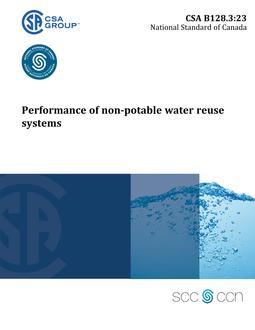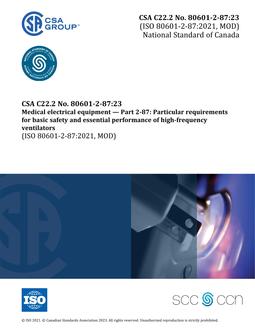
CSA B352.0-09 (R2014)
Click here to purchase
PrefaceThis is the second edition of CSA B352.0, Rollover protective structures (ROPS), falling object protective structures (FOPS), operator protective structures (OPS), and tip-over protective structures (TOPS) for mobile machinery – General Canadian requirements. It supersedes the previous edition, published in 1995 under the title Rollover Protective Structures (ROPS) for Agricultural, Construction, Earthmoving, Forestry, Industrial, and Mining Machines – Part 1: General Requirements.
Scope
1.1
This Standard provides requirements for materials, reduced temperature performance testing, and labelling for roll-over protective structures (ROPS), falling object protective structures (FOPS), operator protective structures (OPS), and tip-over protective structures (TOPS). It also stipulates requirements for seat belts to be used in conjunction with these systems.
1.2
This Standard presents requirements for the analytical design of ROPS and TOPS for one-of-a-kind machines.
1.3
This Standard is intended to be used in conjunction with the ROPS/FOPS/OPS/TOPS series summarized in Clause 0.
1.4
The test requirements for ROPS are intended to provide protection for an operator wearing a seat belt under at least the following conditions:(a) a 360° roll about the machine longitudinal axis on a hard clay surface of a 30° maximum slope, at forward speeds up to 16 km/h, without losing contact with the slope; and
(b) a 180° rear or frontal overturn on a hard, dry surface, without losing contact with the surface.
Note: The testing of ROPS aims at minimizing the likelihood of operator injury resulting from accidental overturning during normal operation, although ROPS meeting the requirements of the ROPS/FOPS/OPS/TOPS series might not provide crush protection under all circumstances of machine overturn.
1.5
The test requirements for TOPS on compact excavators are intended to ensure that reasonable crush protection is provided to an operator wearing a seat belt during a 90° tip-over about the swing frame longitudinal axis on a flat, hard soil surface, without losing contact with the surface.
1.6
The test requirements for FOPS are intended to ensure that seated operators are provided with reasonable protection from falling objects, such as trees or rocks.
1.7
The test requirements for OPS on forestry machines are intended to ensure that operators are provided with reasonable protection from penetrating objects, such as saplings, branches, broken winch lines, and poking hazards, but not from small thrown objects, such as chain teeth. The testing of OPS on compact excavators is intended to ensure that operators are provided with reasonable protection from objects entering the front of the workstation.
1.8
In CSA Standards, “shall” is used to express a requirement, i.e., a provision that the user is obliged to satisfy in order to comply with the standard; “should” is used to express a recommendation or that which is advised but not required; “may” is used to express an option or that which is permissible within the limits of the standard; and “can” is used to express possibility or capability. Notes accompanying clauses do not include requirements or alternative requirements; the purpose of a note accompanying a clause is to separate from the text explanatory or informative material. Notes to tables and figures are considered part of the table or figure and may be written as requirements. Annexes are designated normative (mandatory) or informative (non-mandatory) to define their application.
Product Details
- Edition:
- 2nd
- Published:
- 09/01/2009
- ISBN(s):
- 9781554912063
- Number of Pages:
- 34
- File Size:
- 1 file , 1000 KB
- Product Code(s):
- 2420130, 2420131, 2420130


